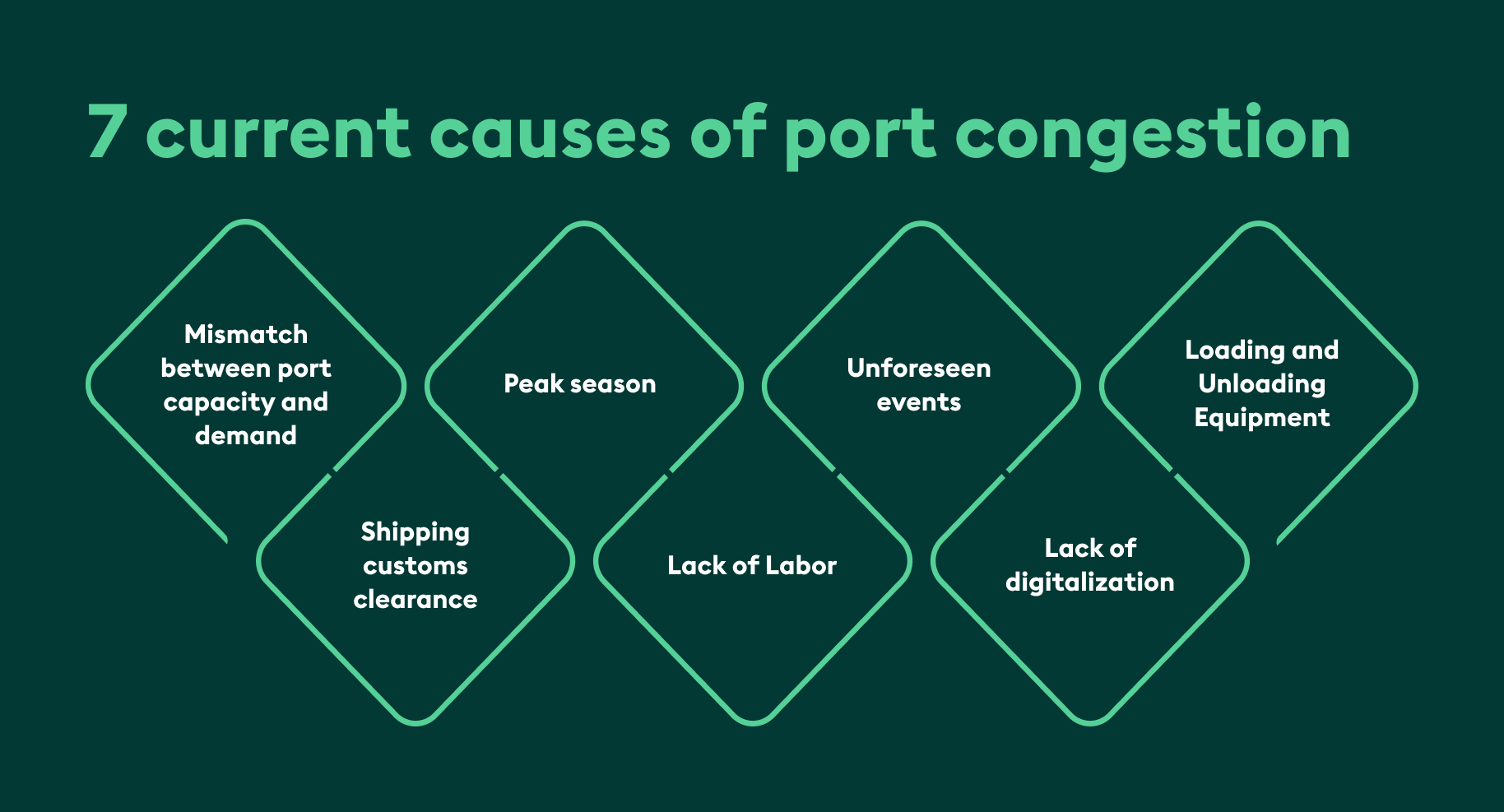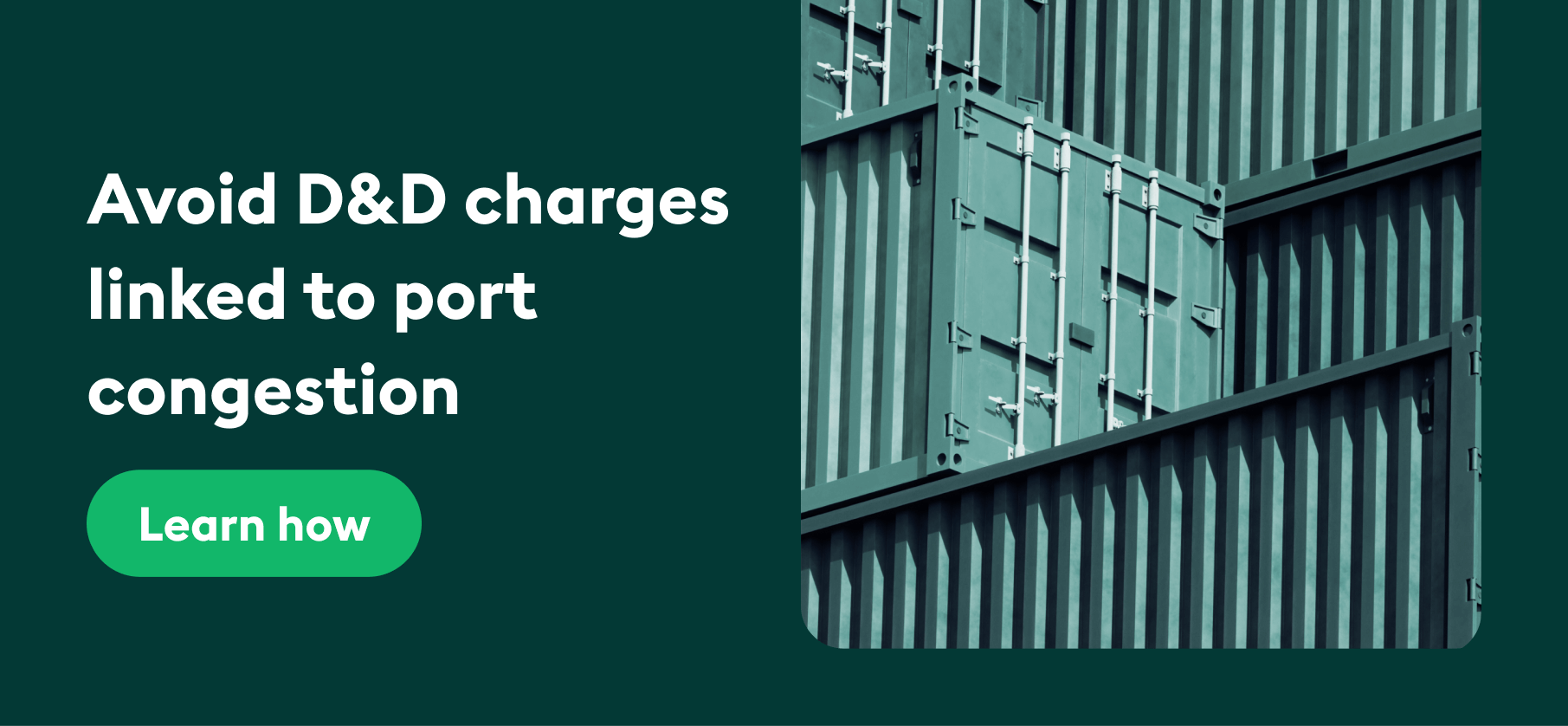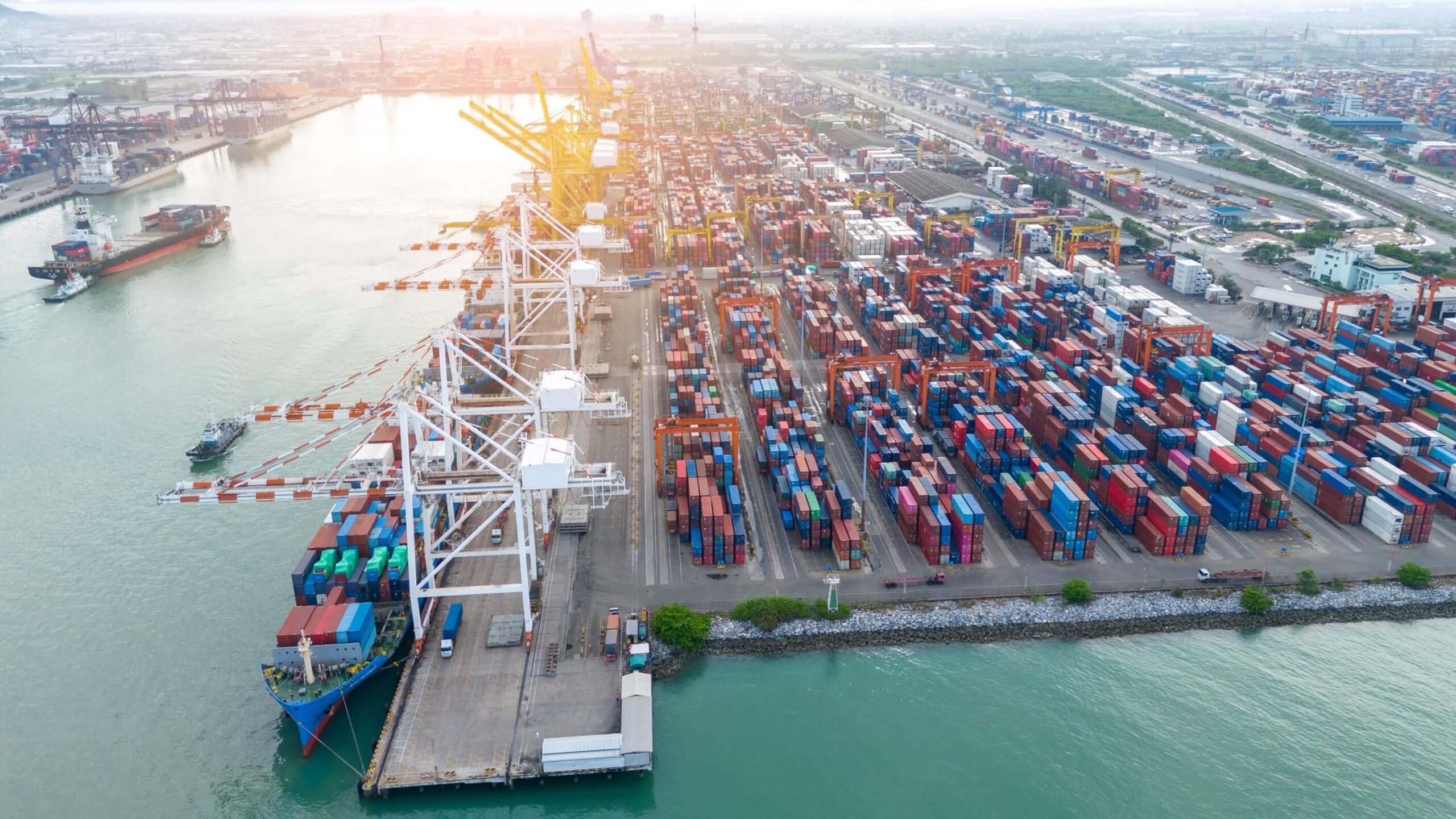Port congestion remains a persistent issue, affecting the entire shipping industry. Read this blog to discover why it happens, its impact, and how to avoid paying D&D charges linked to congestion.
When shipping goods, your priority is to get your cargo to the destination at the right time. Also high up on the list is to keep shipping costs minimal. With the current port congestion, moving your cargo at low prices can be difficult, as congestion leads to expensive D&D fees and other port congestion surcharges.
While port congestion may be outside your hands, you can definitely reduce the cost of shipping by opting for shipper-owned containers (SOCs) and avoid paying D&D charges. We’ll explore it more in this blog.
But if you’re wondering where to source SOCs for your shipment quickly and easily, here’s Container xChange, the largest shipping container marketplace. We’ve got over 100,000 containers available in 2,500 locations globally.
Simply use the public search below to find the best deals on a shipper-owned container for a one-way shipment on your preferred route today!
25 x 40HC
Container Supplier
Container Company Blurred Name
5
Pick-up charge
User pays
$120
19 Freedays
$44.20 Per diem
What is port congestion?
Port congestion occurs when a vessel arrives at a port to load or unload cargo but is unable to berth; therefore, it has to wait outside at the anchorage. This usually occurs when a port or terminal is overbooked and can’t accommodate all the vessels coming in. Port congestion significantly disrupts logistics supply chain management and can often lead to delays.
Port congestion in 2024
The Red Sea crisis has significantly disrupted global shipping this year, causing ships to take longer routes around South Africa to avoid the Red Sea—leading to missed sailing schedules, global port congestion, and fewer port calls.
As a result, vessels have been offloading larger quantities of cargo at major transshipment hubs like Singapore, where goods are transferred to feeder vessels for the final leg of their journey.
This caused congestion at the Singapore port in May-June 2024 and spread to other Asian transshipment ports like Mundra in India. However, the situation in Asia has improved, with congestion easing as ports adapted to the increased volume.
Another looming threat of the port congestion crisis is the potential strike on the US East Coast. The current master contract between the International Longshoremen’s Association (ILA) and the US Maritime Alliance (USMX) expires on September 30. This strike could lead to East Coast port congestion disrupting operations and causing further delays and backlogs across the US.
Keep up with how this strike could disrupt global shipping and how to mitigate the challenges for your business through our monthly detailed newsletter. Get timely updates and expert insights delivered straight to your inbox.
What is the impact of congestion at a port?
Port congestion can lead to delays, longer transit times, and increased surcharges like demurrage and detention. Let’s understand this in detail.
Port delays
One of the most noticeable impacts of port congestion is port delays. Congestion at ports leads to significant delays, as ships spend more time to dock and unload cargo. For example, containerships at Singapore port had to wait up to 7 days to berth during peak congestion in May 2024.
Longer inland transit times
Longer inland transit times are another consequence of port congestion. Delays in port operations ripple through to inland transportation networks. This prolongs the time it takes to transport cargo from the port to its final destination via rail or trucks, compounding delays in shipping schedules.
Supply chain disruptions
Port congestion significantly impacts cargo flow, ultimately leading to supply chain disruptions like changes in delivery schedules and increasing costs for businesses that rely on timely shipments. The ripple effect can impact everything from inventory management to consumer prices.
Demurrage and detention charges
Demurrage and detention (D&D) charges refer to the fees you pay to the carriers for using their containers beyond the allotted free days. Depending on where you ship your cargo and considering the current port congestion, demurrage and detention costs can start piling up and increase your shipping costs.
Apart from D&D charges, some carriers may apply additional port congestion surcharges. Read on to know more.
What is a port congestion surcharge?
A port congestion surcharge is an additional fee imposed by shipping lines or carriers to cover the extra costs incurred due to delays and congestion. When ports are congested, ships may face longer waiting times, increased fuel consumption, and higher operational expenses. To offset these costs, carriers pass on a surcharge to shipping companies.
While you may not be able to avoid port congestion surcharge, you can reduce charges like demurrage and detention by leasing shipper-owned containers, or SOCs.
What’s a SOC and how to lease one?
A container is considered a SOC when the Beneficial Cargo Owner (BCO), freight forwarder, or NVOCC organizes its own container. So instead of using carrier-owned containers (COCs), you bring your own units.
In the current market landscape, COC shipping rates are skyrocketing due to longer voyages and congestion at major Asian ports. When combined with the port congestion surcharge, COC shipping costs increase further.
In such a situation, it makes more sense for your business to lease SOCs from container owners for one-way moves. This way, you avoid paying hefty D&D charges associated with port congestion and can move your cargo at low prices.
But how do you find container owners who want to lease containers on your preferred route? Right here on the Container xChange leasing platform, where you can connect with 1,700+ container suppliers. Select your preferred route, find container leasing offers, and negotiate per diem and free days with the supplier directly.
Want to check out offers from vetted suppliers in your desired route? Click the banner below to get started!
Top 7 causes of port congestion
Port congestion is caused by a mismatch between port capacity and demand, unforeseen events, and peak season, among others. Read on to know more.
Mismatch between port capacity and demand
Port congestion often arises from a mismatch between port capacity and demand for its services. For example, at Mundra port, a surge in cargo volume exceeded the port’s handling capacity, leading to significant delays. The influx of vessels and cargo overwhelmed the available infrastructure, creating bottlenecks and slowing down the entire supply chain.
Increased consumer spending
During peak season periods, a surge in demand for goods leads to a higher volume of imports, overwhelming ports with more cargo than they can efficiently process. Carriers may also charge a peak season surcharge to compensate for the operational costs they face during the peak season.
Unforeseen events
Geopolitical events and natural disasters are another reason for congested ports. The Red Sea crisis, for example, caused ships to reroute around Africa, resulting in delays and severe congestion at key Asian ports.
Lack of digitization
A lack of digitization in port operations can lead to inefficiencies, as manual processes slow down cargo handling and create bottlenecks. Without advanced tracking and automation, ports struggle to manage high volumes, contributing to congestion.
Shipping customs clearance
Some shipping container clearance procedures can be extremely strict; therefore, not many requests are cleared. This leads to things like low productivity and delayed flow of goods.
Lack of labor
A shortage of labor is a significant cause of port congestion and ship delays. The West Coast ports experienced severe delays during labor disputes in 2023, which disrupted operations and created backlogs. Now, the potential East Coast strike poses a similar threat.
Inadequate port infrastructure
Lastly, inadequate or outdated port infrastructure like insufficient berthing slots, cranes, container storage, gates, and road access can hamper the ability of port authorities to handle vessels.

Now that you know the causes of congestion, let’s look at some ways this can be avoided.
4 ways to avoid port congestion
Here are a few ways to avoid port congestion.
-Try different port locations: Considering a different destination port location might mean a longer inland transit, but it’s better than leaving your cargo stuck at a congested port.
-Use different modes of transporting freight: To bypass port congestion, consider alternative modes of transport like land or rail. For example, the Panama Canal Railway and the China-Europe Railway network offer efficient alternatives to traditional shipping routes, helping minimize delays and keep your supply chain moving smoothly.
-Cargo redistribution: Distribute your cargo across multiple ocean carriers to reduce the risk of delays, ensuring that not all your goods are stuck on a single vessel if congestion occurs.
-Virtual warehousing: By strategically storing goods in multiple locations, you can quickly reroute shipments to less crowded ports, ensuring faster delivery.
Even with these strategies, factors like the Red Sea crisis are beyond your control. However, you can still reduce shipping costs by using shipper-owned containers to avoid costly demurrage and detention charges. Read on to learn how xChange can help you with this.
Save money on D&D charges by leasing SOCs on Container xChange
Using SOCs helps you save a lot of money on demurrage and detention charges since these boxes are shipper-owned and there are no time constraints for returning the box to carriers.
On the Container xChange marketplace, you can find vetted suppliers to lease SOCs. Just select the container type and size you need, and you’ll get multiple offers to choose from within seconds. When you find something that suits you, reach out to the supplier directly to negotiate the rates, terms, and conditions.
Here are some other benefits you’ll enjoy as a member of xChange:
- Access 100,000+ containers in over 2,500 locations worldwide.
- Work with 1,700+ vetted and pre-approved suppliers.
- Compare multiple SOC offers in one place.
- Get complete price transparency.
- No hidden costs
- Negotiate deals directly with partners—no middleman
Here’s what Jérémy Grandjean, the co-founder of MG-Atlantic, has to say about using xChange:
“We almost consider xChange to be our third colleague because of the amount of work that the marketplace does for us.”
Do you also want to connect with more such companies and lease containers to avoid D&D charges for your next shipment? Simply click the banner below to explore all offers on your preferred route today!

Port congestion: Common FAQs
What causes port congestion?
Port congestion is caused by factors like mismatches between port capacity and demand, labor shortages, geopolitical events like the Red Sea crisis, and natural disasters. These disruptions lead to delays in cargo handling and create bottlenecks at ports.
Where does port congestion come from?
Port congestion arises from a combination of factors, including increased cargo volumes that exceed port capacity, labor shortages, and disruptions from geopolitical events or natural disasters.
Are US ports still congested?
US ports are not currently congested, but the potential East Coast strike poses a significant threat that could lead to future delays and disruptions.


